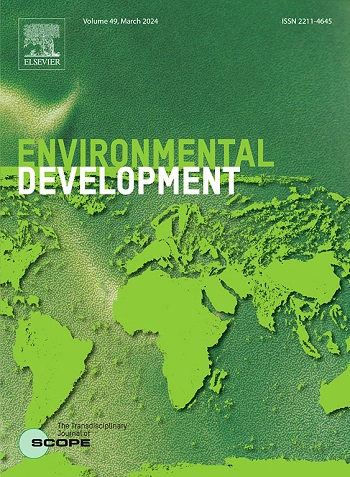基于生态系统的港口环境管理工具:巴西南部阿雷格里港的方法建议
IF 5.3
2区 环境科学与生态学
Q2 ENVIRONMENTAL SCIENCES
引用次数: 0
摘要
港口对其周围环境施加了相当大的压力,因为它们是领土转变的潜在诱因,这可能导致环境服务的全部或质量损失。这加强了将港口环境管理纳入努力的必要性。在这方面,以生态系统为基础的环境管理在巴西和世界范围内是一种可行和必要的管理替代方案。本文以巴西RS阿雷格里港为例,阐述了一种方法,以支持基于生态系统的港口环境管理的短期、中期和长期行动的优先次序。提出了与环境系统和港口活动不合规有关的管理行动建议并进行了排名。将驱动-压力-状态-影响-响应(DPSIR)与生态系统与服务矩阵(MES)相结合,作为分析工具,揭示了人类干预对生态系统的因果关系和生态系统服务的潜在损失。一个关键因素是在DPSIR矩阵中确定港口的不遵守情况。产生了一个具有成本效益和简化的模式,可以支持环境议程的制定,达到更实际和适用的水平。最终,这个模型包含一个“检查”管理效率的工具。本文章由计算机程序翻译,如有差异,请以英文原文为准。

An ecosystem-based tool for port environmental management: methodological proposal for the Porto Alegre port, southern Brazil
Ports exert considerable pressure on its surrounding environments because they are potential inducers of territorial transformations, which may lead to a total or quality loss of environmental services. This reinforces the need to incorporate efforts on port environmental management. In this context, Ecosystem-Based Environmental Management presents itself as a viable and essential alternative to management in Brazil and worldwide. In this article, a methodology was elaborated to support the prioritization of short medium and long term actions of port environmental management based on ecosystems, using Porto Alegre Port, RS, Brazil as a case study. Recommendations for management actions related to environmental systems and non-compliance in port activities were proposed and ranked. As an analysis tool, the Driver – Pressure – State– Impact – Response (DPSIR) integrated to the Ecosystems and Services Matrix (MES) was used to indicate the cause and effect relationships of human interventions on ecosystems and the potential loss of ecosystem services. A key factor was identifying the Port's non-compliance in the DPSIR matrix. Was produced a cost-effective and simplified model that can support the creation of an environmental agenda, reaching a more practical and applied level. Ultimately this model consists in a tool for “checking” management efficiency.
求助全文
通过发布文献求助,成功后即可免费获取论文全文。
去求助
来源期刊

Environmental Development
Social Sciences-Geography, Planning and Development
CiteScore
8.40
自引率
1.90%
发文量
62
审稿时长
74 days
期刊介绍:
Environmental Development provides a future oriented, pro-active, authoritative source of information and learning for researchers, postgraduate students, policymakers, and managers, and bridges the gap between fundamental research and the application in management and policy practices. It stimulates the exchange and coupling of traditional scientific knowledge on the environment, with the experiential knowledge among decision makers and other stakeholders and also connects natural sciences and social and behavioral sciences. Environmental Development includes and promotes scientific work from the non-western world, and also strengthens the collaboration between the developed and developing world. Further it links environmental research to broader issues of economic and social-cultural developments, and is intended to shorten the delays between research and publication, while ensuring thorough peer review. Environmental Development also creates a forum for transnational communication, discussion and global action.
Environmental Development is open to a broad range of disciplines and authors. The journal welcomes, in particular, contributions from a younger generation of researchers, and papers expanding the frontiers of environmental sciences, pointing at new directions and innovative answers.
All submissions to Environmental Development are reviewed using the general criteria of quality, originality, precision, importance of topic and insights, clarity of exposition, which are in keeping with the journal''s aims and scope.
 求助内容:
求助内容: 应助结果提醒方式:
应助结果提醒方式:


